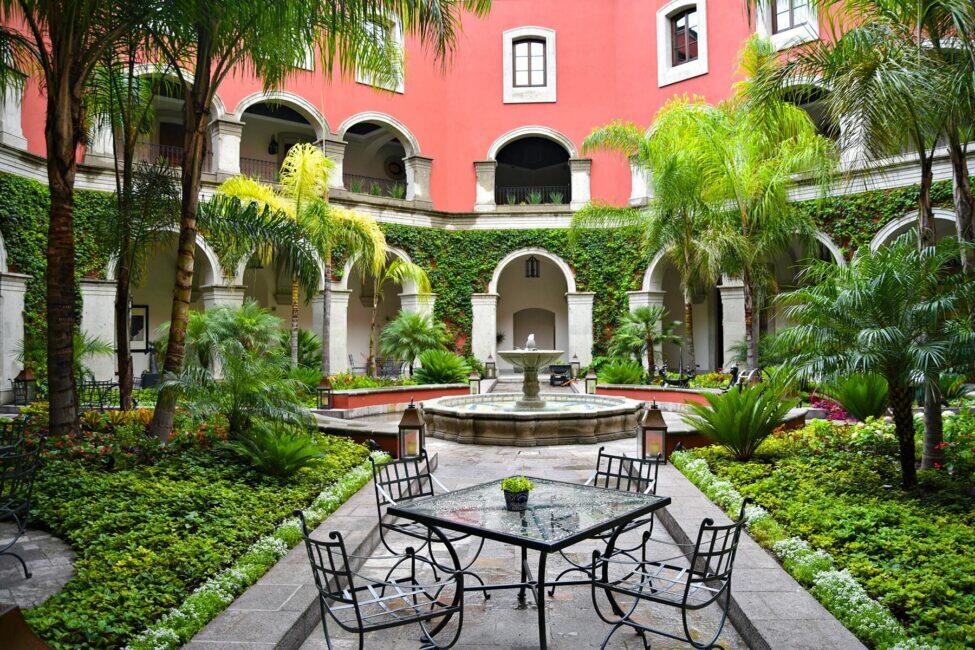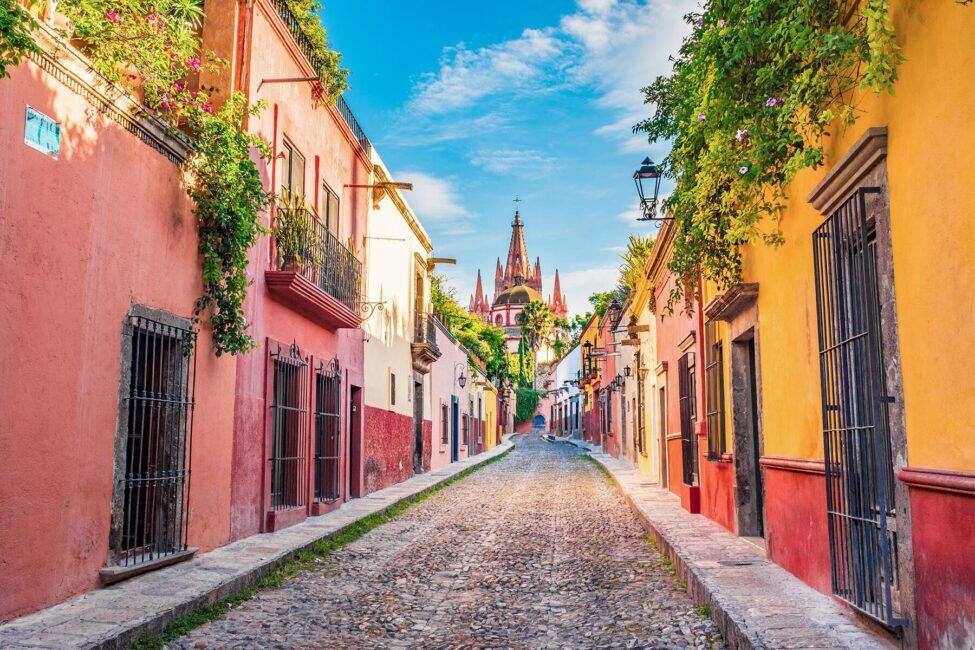Before March the narrow cobblestone roads of San Miguel de Allende were packed with tourists making their way up the hill to take advantage of the view-top to capture photos of the Gothic cathedrals, ducking into the artist shops to buy souvenirs, and stopping off at a patio for some mezcal. Any frequent reader of glossy travel magazines knows this artist enclave as one of the “best small cities in the world.” The UNESCO World Heritage site in the heart of colonial Mexico is one of the country’s top spots for tourists outside of the beaches.
Like many tourist hotspots around the world, San Miguel de Allende relies heavily on tourism as a driving force of its economic engine. And like many tourist hotspots, the lockdown during the beginning of the pandemic was financially devastating to businesses that have come to rely on the steady flow of American visitors. After months of empty hotel rooms, some destinations around the world have started to reopen, touting their new and improved safety measures as a way to lure back tourists. Few destinations, however, are doing as good of a job with safety as San Miguel de Allende.
“San Miguel de Allende has been very smart about reopening in a way that is safe for both tourists and the residents who live here,” said Gustavo Vidargas, public relations manager of Rosewood San Miguel de Allende.

As a result, the city has one of the lowest case rates in Mexico. About 1,600 cases of coronavirus have been reported in the city of 160,000 residents since the beginning of March.
“I think that is a huge indication of the way the city has been handling things in terms of health,” Vigargas said.
While Mexico never denied entry to American tourists, access to San Miguel was closed to non-residents for four months as the coronavirus pandemic first started spreading in the late spring. On May 25, the city unveiled a “Health First” program that outlined sanitary protocols local businesses must follow before reopening. On July 2, the World Travel and Tourism Council granted the city the Safe Travels seal, which indicates that a destination has adopted certain health and safety protocols. The stamp reaffirmed the city was properly ready in terms of sanitation, said Laura Torres-Septien, President of the San Miguel de Allende Tourism Board. On July 15, the city officially reopened to tourists with hotels operating a maximum capacity of 40%, a strict mask ordinance, and several new laws to ensure social distancing.
About 1,600 cases of coronavirus have been reported in the city of 160,000 residents since the beginning of March.
To limit the number of people milling around San Miguel, non-residents are not allowed to enter the city without a hotel or restaurant reservation. Guests must show a QR code verifying their reservation at checkpoints leading into the city. Once inside the city, a mask mandate is strictly enforced. Signs are placed around town to remind everyone to wear a mask while many historic statues are seen with masks covering the face. When the city first reopened in July, police arrested two tourists who refused to wear a mask after a police officer informed them of the new law.

Visitors entering the city’s pedestrian-only historic center must pass through sanitizing arches. The inflatable tunnels are stationed at each of the historic center’s seven entry points. Visitors must walk through a fine disinfecting mist sprayed throughout the tunnel to enter the city center.
Most federal buildings, including museums, are closed to the public. All businesses, including bars and restaurants, must close by 10 p.m. Restaurants are only operating at up to 50% of their normal capacity. Businesses must also comply with an extensive set of health safety protocols such as temperature checks and hand- and shoe-sanitizing for entry. Health officials monitor businesses daily and can revoke licenses for businesses that fail to comply.
Like all hotels, guests entering Rosewood San Miguel de Allende, which sits on five acres outside the historic city center, have to step on a sanitizing mat to sterilize their shoes, hold out their arm to have their temperature scanned, and rub their hands with a dollop of hand sanitizer.

The hotel reopened its doors to guests on July 15. Since then they have not had a guest with a confirmed case of COVID-19 while on the property, nor have they had a guest infect a worker. Vidargas credits the strict adherence to sanitizing protocols.
The hotel does have protocols in place if a guest does become infected during their stay.
“If a guest starts showing symptoms, we have a particular lab that comes directly into the hotel to administer the PCR test,” he said. “If it turns out positive, the guest can self-isolate and we will deliver food, towels, and sheets outside the room.”
Source: FODORS





